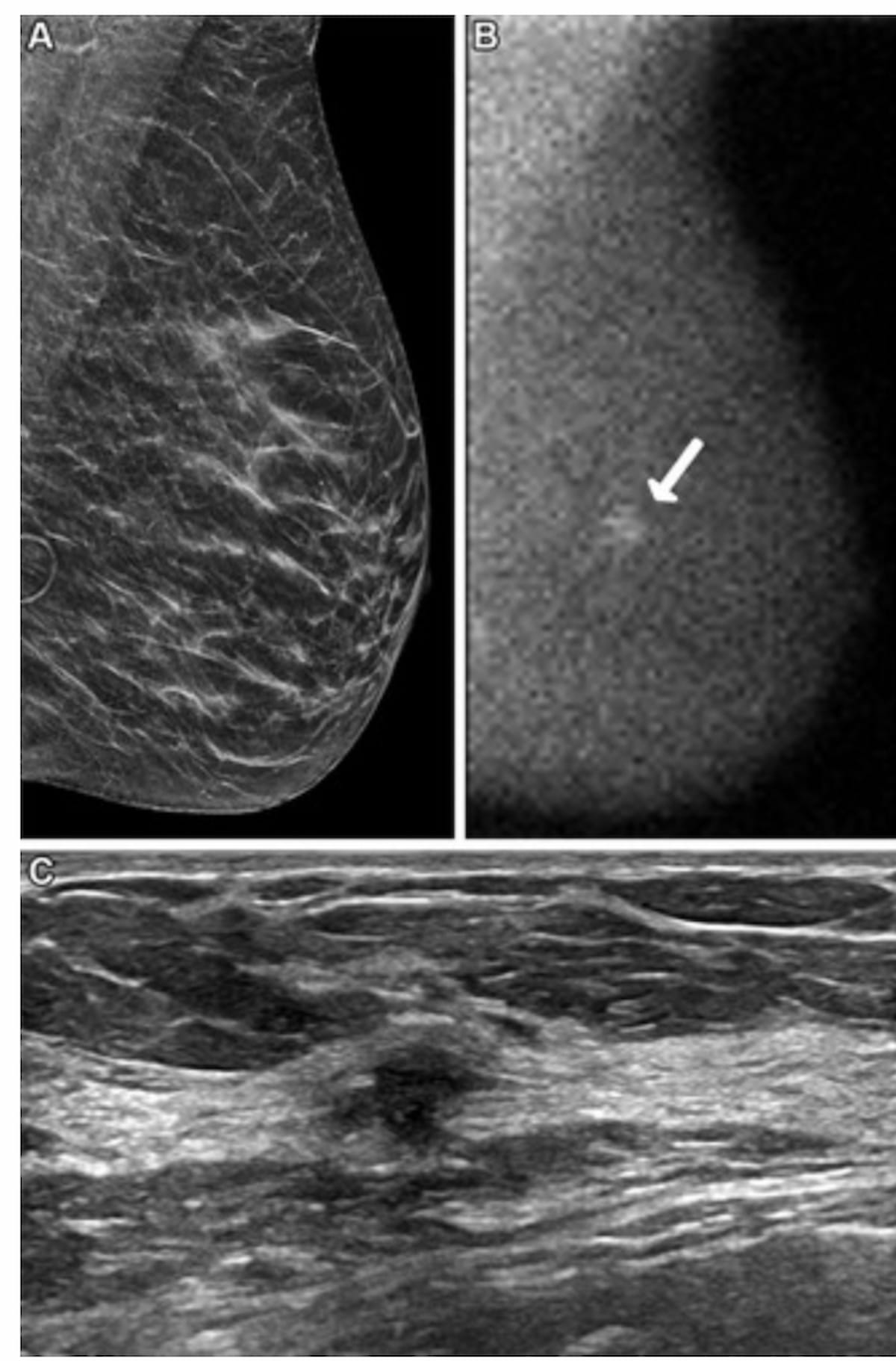For women with dense breasts, new research suggests that supplemental molecular breast imaging (MBI) more than doubles the detection of invasive breast cancer in comparison to digital breast tomosynthesis (DBT) alone.
For the multicenter prospective study, recently published in Radiology, researchers compared DBT versus the combination of DBT and prevalence screening MBI in 2,978 women with dense breasts (mean age of 56.8). All women in the cohort had two rounds of breast cancer screening and had a mean lifetime Tyrer-Cuzick risk of 12 percent, according to the study.
The researchers found a cancer detection rate (CDR) of 5 percent for DBT and 11.8 percent for those who had DBT and MBI at the first year of screening. At the second year of screening, the CDR for DBT was 5.8 percent in comparison to 9.3 percent for DBT and MBI.
“To our knowledge, this is the first multicenter prospective evaluation of molecular breast imaging (MBI) as a supplement to digital breast tomosynthesis in women with dense breasts and average risk. In this trial, MBI depicted an additional 6.7 cancers per 1000 screenings at year 1 (prevalence round) and an additional 3.5 cancers per 1000 screenings at year 2 (incidence round),” wrote lead study author Carrie B. Hruska, Ph.D., who is affiliated with the Department of Radiology at Mayo Clinic in Rochester, Minn., and colleagues.
The study authors determined that the invasive CDR at year one was 3 percent for DBT in contrast to 7.7 percent for DBT and MBI. For the second year of screening, the researchers found a 1.5 percent invasive CDR for DBT and a 3.9 percent invasive CDR for DBT and MBI.
While acknowledging a 3.2 percent decline of incremental CDR from year one to year two with supplemental MBI, the researchers maintained that the addition of MBI maintained a significant impact for detecting invasive breast cancer.
“ … MBI still depicted more than twice as many invasive cancers and four times as many advanced cancers as DBT did at year 2,” pointed out Hruska and colleagues.
Three Key Takeaways
- Higher cancer detection with MBI. Supplemental molecular breast imaging (MBI) more than doubled the invasive breast cancer detection rate compared to digital breast tomosynthesis (DBT) alone in women with dense breasts.
- Early detection advantage. Over 90 percent of cancers detected only by MBI were node-negative, indicating earlier-stage disease identification and potential for improved outcomes.
- Sustained benefit across screening rounds. Although incremental detection declined in the second screening year, MBI still revealed more than twice as many invasive cancers and four times as many advanced cancers as DBT alone.
For 29 patients who had cancers detected solely with supplemental MBI, the study authors pointed out that 21 of these patients had invasive breast cancer and six patients had advanced cancer presentations. Additionally, 26 of these patients had node-negative cancers, according to the researchers.
“Ninety percent of cancers detected only with MBI were node negative, indicating that MBI screening provides early detection. Additionally, 20% of those cancers were advanced, suggesting that MBI can reveal a reservoir of mammographically occult, clinically important disease with lethal potential, possibly having escaped detection over multiple mammographic screens,” emphasized Hruska and colleagues.
(Editor’s note: For related content, see “Study Suggests Benefits of FDG PET/CT for Detecting Oligometastatic Breast Cancer,” “Can Radioligand Therapy Have an Impact for Women with Breast Cancer?” and “Digital Breast Tomosynthesis Study Assesses Impact of Architectural Distortion on Malignancy Rates.”)
In regard to study limitations, the researchers acknowledged the lack of randomization and the assessment of MBI as a supplement to DBT as opposed to evaluation as a separate screening modality.
